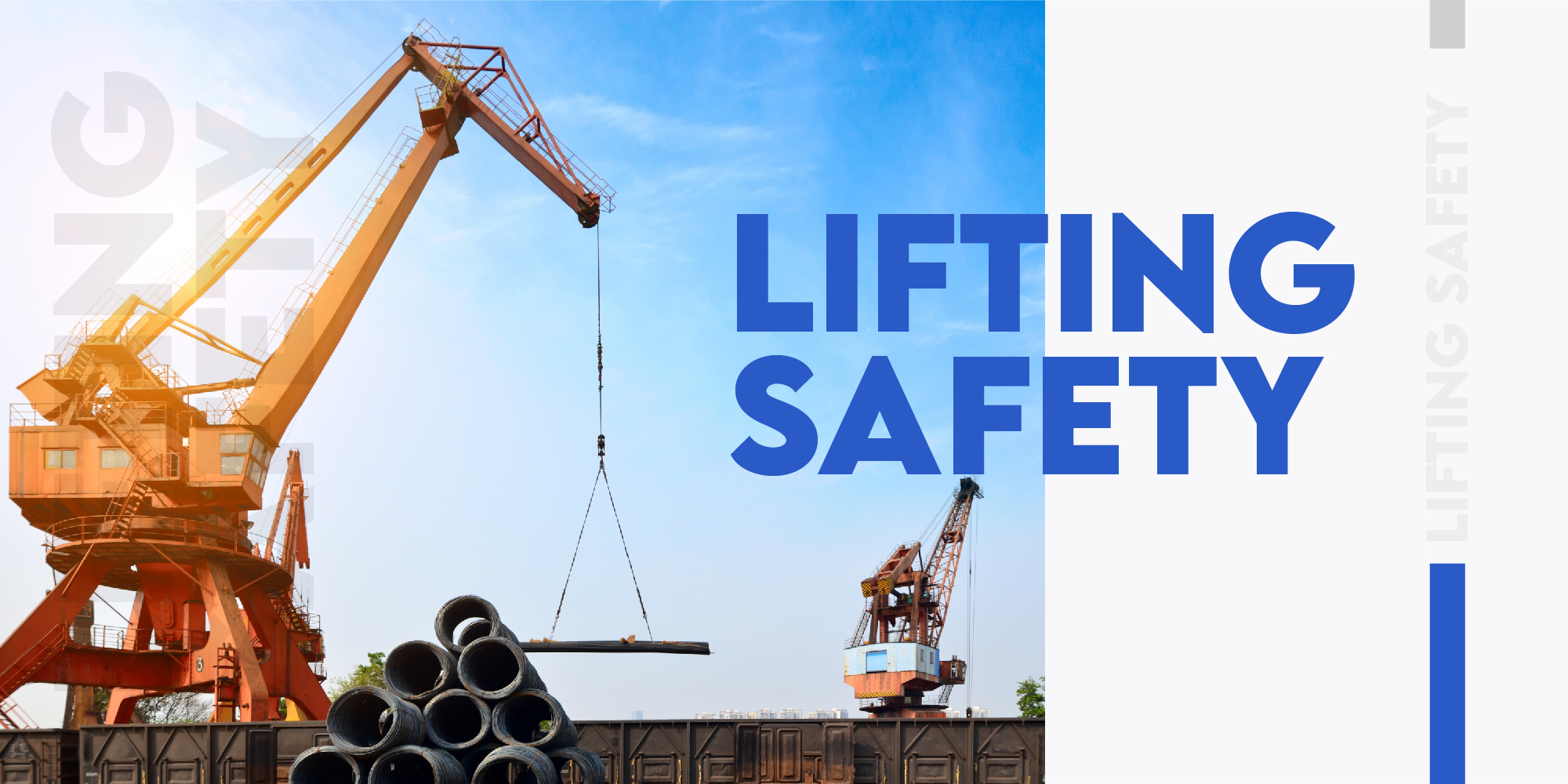NIST Global delivers comprehensive training to mitigate the Legal, International Standard & Organization Safety requirements on Lifting Operations (Indian factories act 1948 Section 29; IS 13367 (Part 1): 1992, OSHA, ANSI)
“WE DO PROMOTE INDUSTRY’s BEST PRACTICES IN LIFTING SAFETY TO SET OUR OWN BENCHMARK”
What is Lifting Safety?
“Lifting safety involves implementing proper techniques, equipment, and protocols to ensure that loads are lifted and moved without causing harm to people, equipment, or the environment. This applies to both manual lifting by individuals and mechanical lifting using cranes, hoists, forklifts, or other machinery”
An action of moving something from lower to higher position.
Rigging is a process of lifting and moving an object
Slinging – An action of securing an object to lifting equipment using a connector like rope, wire etc.
A crane is a type of machine, generally equipped with a hoist rope, wire rope or chains and sheaves that can be used both to lift and lower materials and to move them horizontally. It is mainly used for lifting heavy objects and transporting them to other places.
Know the General Risk of Lifting Activity using Cranes:
Risk is combination of “Likely occurrence” of exposing to the hazards and “consequence” of the occurrence
Likely occurrences – What are the most common crane accidents?
- Fall of suspended load
- Crane collapse
- Crane toppling
- Crane collision
- Stuck with nearby object/structure
- Electrical shock/Electrocution with overhead power line
- Traumatic brain injury
Consequences – What are the most common injuries of crane accident?
- Spine injury
- Disability
- Multiple fractures
- Head injury
- Crush injury
- Amputation
- Broken bones
WHY Lifting Awareness is important?
- Lifting activity is one of the life threatening HIGH risk activity.
- The results of lifting accident will always be major or catastrophic.
- Number of people under the risk during lifting activity is high.
- Property Value involved in the lifting activity is high as the load is always heavy.
- Large space would be demanded to perform lifting activity hence the danger – zone is very high(The entire lifting radius would be considered as danger zone)
- The equipment used for lifting activity is heavy and critical
Lifting Accident case Studies
Case study 1: Thane Crane Collapse (August 2023): In August 2023, a massive crane collapsed at a highway construction site in Thane, Maharashtra, resulting in the deaths of at least 20 workers and injuring three others. The crane was being used to install precast box girders for the Samruddhi Expressway when it toppled onto large concrete slabs, crushing laborers working below.
Case study 2: Chennai Airport Crane Accident (June 2010): At Chennai International Airport, a crane collapsed during construction activities, leading to the death of one worker. The accident was attributed to mechanical failure and inadequate safety protocols.
Common Causes Identified for lifting failures/accidents:
- Poor lifting plan
- Performing Lifting activity in adverse weather condition
- Usage of unsuitable Crane & lifting accessories
- Poor Slinging Method
- Not maintaining COG
- Incompetent Operator & Lifting Team Members
- Overloading & Over speeding
- Using defective Crane/Lifting Tools & tackles
- Poor communication between the lifting team
Lifting Safety Courses offered by NIST Global:
- Lifting & Rigging Training
Find the details from the below link:
- Crane Operational Safety
Find the detail from the below link:
Benefits of Third Party Lifting Training:
Investing in third-party lifting safety training is a proactive step that demonstrates an organization’s commitment to workplace safety, compliance, and operational efficiency.
WHY NIST Global for Lifting Safety Training?
- Expertise Trainer – Our Trainers are National & International Certified (LEEA) HSE Professionals-Having Exposures in various sectors such as Construction, Manufacturing, Logistics, Oil & Gas, Power Plants, and Establishments etc.
- Hands On Training – NIST provides both practical & theoretical training on Lifting Safety – Theoretical Lesson plan is designed as Activity based which ensure audience engagement throughout the training period.
- High Quality Training Materials – NIST Training materials are customized to specific workplace, Our Materials are designed to mitigate Legal/International Standard/Organization and Industries Best Practice requirements.
- Interactive Session– NIST believes Trainees involvement thorough the training period is the key stone to fulfill the training outcome. So NIST lesson plan decided in such a way to encourage trainees’ participation through the training period.
- ISO Certified Organization– NIST Global is ISO 9001:2018, ISO 14001:2015 & ISO 45001:2018 Certified Organization.
- Customized Training – NIST Global provides both standard & customized lifting safety trainings, Customization will be done based on the client specific requirements.
—-“From Basic Skills to Advanced Techniques, We’ve Got Your Safety Covered!”—-
FAQs
- Q: Why should my company take third party training whereas we provide regular lifting training internally?
A: Third party training is legal requirement for certain life threatening activities like Working at height, Confined space, Lifting, Pressure testing , Hot works etc. Also to ensure the worker competency with external assessment third party training is advisable.
- Q: Will practical training provided for lifting safety?
A: Yes, both theoretical and practical training will be provided.
- Q: Who can attend the lifting Safety training?
A: Lifting operators; Lifting Supervisors; Lifting engineers; Riggers; anybody who involved in structure erections & Heavy load handling activities shall participate.
——–“Contact Us to Elevate Your Lifting Safety Standards!”————


